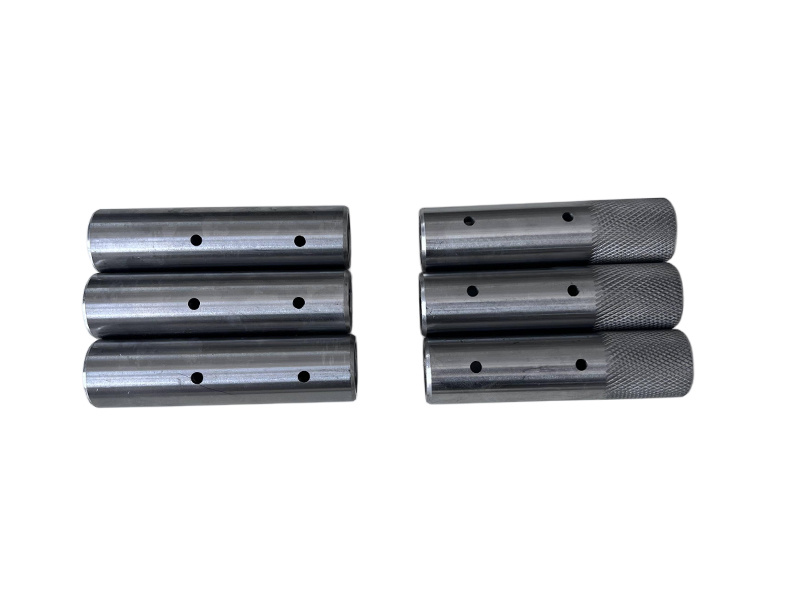Understanding Speed Regulating Shafts in Agricultural Machinery
Oct 01,2025
In the agriculture sector, the efficiency of machinery is crucial for optimizing productivity and ensuring effective operations. One critical component that plays a significant role in enhancing the functionality of various agricultural machines is the speed regulating shaft. This component is designed to control and adjust the speed of rotating equipment, ensuring that the machinery operates smoo

In the agriculture sector, the efficiency of machinery is crucial for optimizing productivity and ensuring effective operations. One critical component that plays a significant role in enhancing the functionality of various agricultural machines is the speed regulating shaft. This component is designed to control and adjust the speed of rotating equipment, ensuring that the machinery operates smoothly and efficiently.
A speed regulating shaft functions by maintaining a consistent speed in applications where variable speeds could lead to inefficiencies or potential damage. For instance, in agricultural machinery such as tractors or harvesters, the ability to maintain a steady speed is essential for tasks like tilling, planting, and harvesting. By regulating the speed, these shafts help prevent stalling, wear, and tear, ultimately extending the lifespan of the equipment.
Moreover, speed regulating shafts contribute to improved fuel efficiency. When agricultural machinery operates at an optimal speed, it uses fuel more effectively, which not only reduces operational costs but also lessens the environmental impact associated with excessive fuel consumption. This is particularly important as the agricultural industry seeks to adopt more sustainable practices.
In addition to enhancing fuel efficiency, speed regulating shafts also provide better control over the performance of various implements attached to agricultural machinery. For example, when a farmer uses a seeder or a plow, the speed of the tractor can be adjusted to align with the specific requirements of the task at hand. This adaptability allows for precision in operations, leading to better crop yields and overall efficiency.
Furthermore, the integration of modern technology in speed regulating shafts, such as electronic controls and sensors, has made these components even more effective. These advancements allow for real-time monitoring and adjustments, providing farmers with more autonomy and control over their operations. As technology continues to evolve, the role of speed regulating shafts in agricultural machinery will likely become even more significant.
In summary, speed regulating shafts are essential components in the agricultural machinery landscape. They ensure that equipment operates at optimal speeds, improving efficiency, reducing fuel consumption, and enhancing the overall performance of farming operations. As the agricultural sector continues to innovate and adapt to modern challenges, understanding the role of such components becomes vital for farmers and manufacturers alike, paving the way for a more efficient and sustainable future in agriculture.
A speed regulating shaft functions by maintaining a consistent speed in applications where variable speeds could lead to inefficiencies or potential damage. For instance, in agricultural machinery such as tractors or harvesters, the ability to maintain a steady speed is essential for tasks like tilling, planting, and harvesting. By regulating the speed, these shafts help prevent stalling, wear, and tear, ultimately extending the lifespan of the equipment.
Moreover, speed regulating shafts contribute to improved fuel efficiency. When agricultural machinery operates at an optimal speed, it uses fuel more effectively, which not only reduces operational costs but also lessens the environmental impact associated with excessive fuel consumption. This is particularly important as the agricultural industry seeks to adopt more sustainable practices.
In addition to enhancing fuel efficiency, speed regulating shafts also provide better control over the performance of various implements attached to agricultural machinery. For example, when a farmer uses a seeder or a plow, the speed of the tractor can be adjusted to align with the specific requirements of the task at hand. This adaptability allows for precision in operations, leading to better crop yields and overall efficiency.
Furthermore, the integration of modern technology in speed regulating shafts, such as electronic controls and sensors, has made these components even more effective. These advancements allow for real-time monitoring and adjustments, providing farmers with more autonomy and control over their operations. As technology continues to evolve, the role of speed regulating shafts in agricultural machinery will likely become even more significant.
In summary, speed regulating shafts are essential components in the agricultural machinery landscape. They ensure that equipment operates at optimal speeds, improving efficiency, reducing fuel consumption, and enhancing the overall performance of farming operations. As the agricultural sector continues to innovate and adapt to modern challenges, understanding the role of such components becomes vital for farmers and manufacturers alike, paving the way for a more efficient and sustainable future in agriculture.
TAG:
Recent News
Mastering Agricultural Machinery: A Deep Dive into Engine Speed Control Shaft Mechanics
Mastering Agricultural Machinery: Understanding Engine Speed Control Shaft
Table of Contents
1. Introduction to Engine Speed Control Shaft in Agricultural Machinery
2. Importance of Engine Speed Control Shaft in Agricultural Machinery
3. How Engine Speed Control Shaft Works
4. Types of Engine Speed Control Shafts
4.1. Mechanical Control Shafts
4.2. Electronic Control Shafts
5. Common Issues with E


